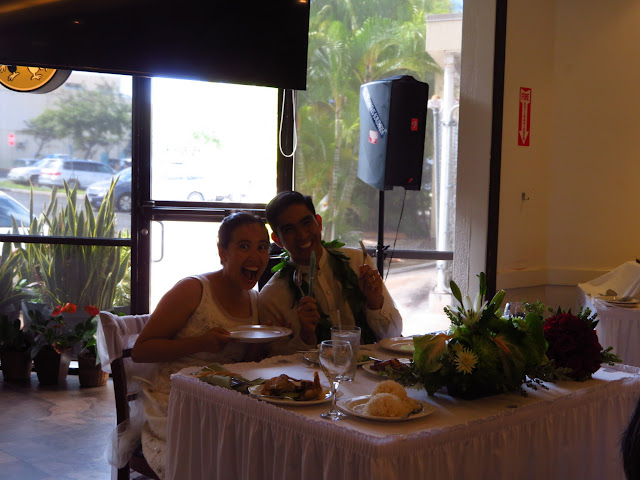Orville and Lorie get married!!
So the day of the reason I stopped over in Honolulu came around. It is the wedding day of one of friends from high school, Orville Baldos! He's tying the know with Lorie Tongco, who he introduced to me, Rizza, and Kuya Rhulyx (in person) a few months ago.
They had a very tasteful and simple wedding at the Co-Cathedral of Saint Theresa of the Child Jesus. I was the only one who made it among Orville's high school friends. But it's okay because I was able to meet again one of our common friends from college, Chester Dabalos. Also, I got introduced to Lorie's friends Didi and Duane. It is, literally, an intimate wedding because only a few friends and family were in attendance.
Since the wedding wasn't as grand as the other weddings I attended this year, it fell upon us guests to record the memories coming from the wedding. The couple had a team document the ceremony but they had already left... they weren't able to capture the scenes at the church after the ceremony. Duane, Didi, and I took it upon ourselves to do the photography. And for some reason, I found the photos to be more personal, more candid... something that's lost in photos captured by typical wedding photogs who take nuanced shots.
Following the simple elegance of the wedding ceremony, the newlyweds hosted their own reception at Max's Restaurant. Yes, they hosted! The food was delicious... I wonder why the chicken in Max's branches in the Philippines (with the exception of the Hacienda Luisita branch) don't taste as good.
Anyway, as the guests left the reception, I remembered one of the Hawaiian words I've learned on this trip: 'Ohana, which means extended family. Strong family bond. I am so honored to have been invited to witness Orville and Lorie start their own family surrounded by family and friends who will support them through thick and thin.












Comments
Post a Comment
Thank you for dropping by!
Before moving on, please share your thoughts or comments about the post. :)
Thanks again!